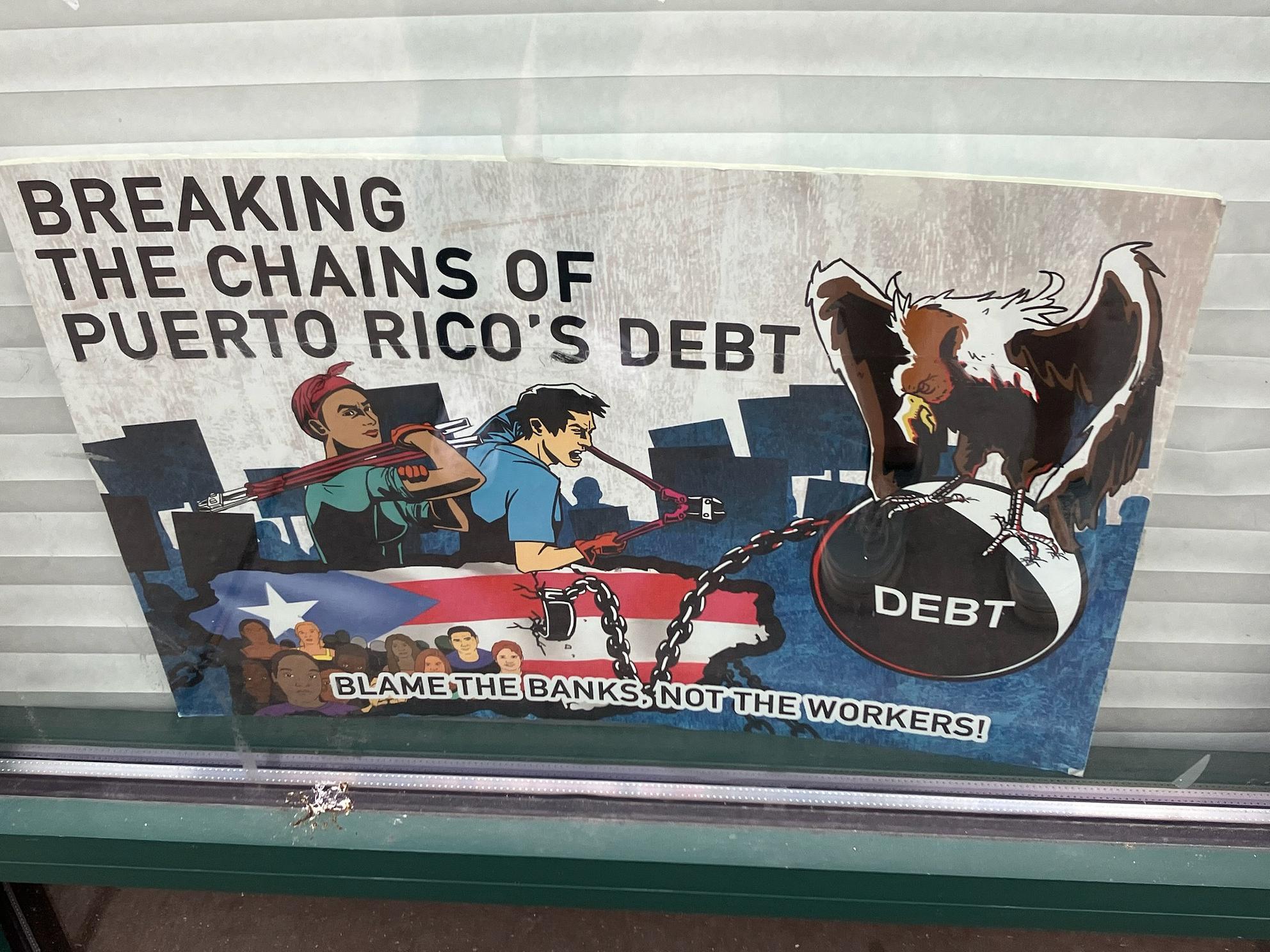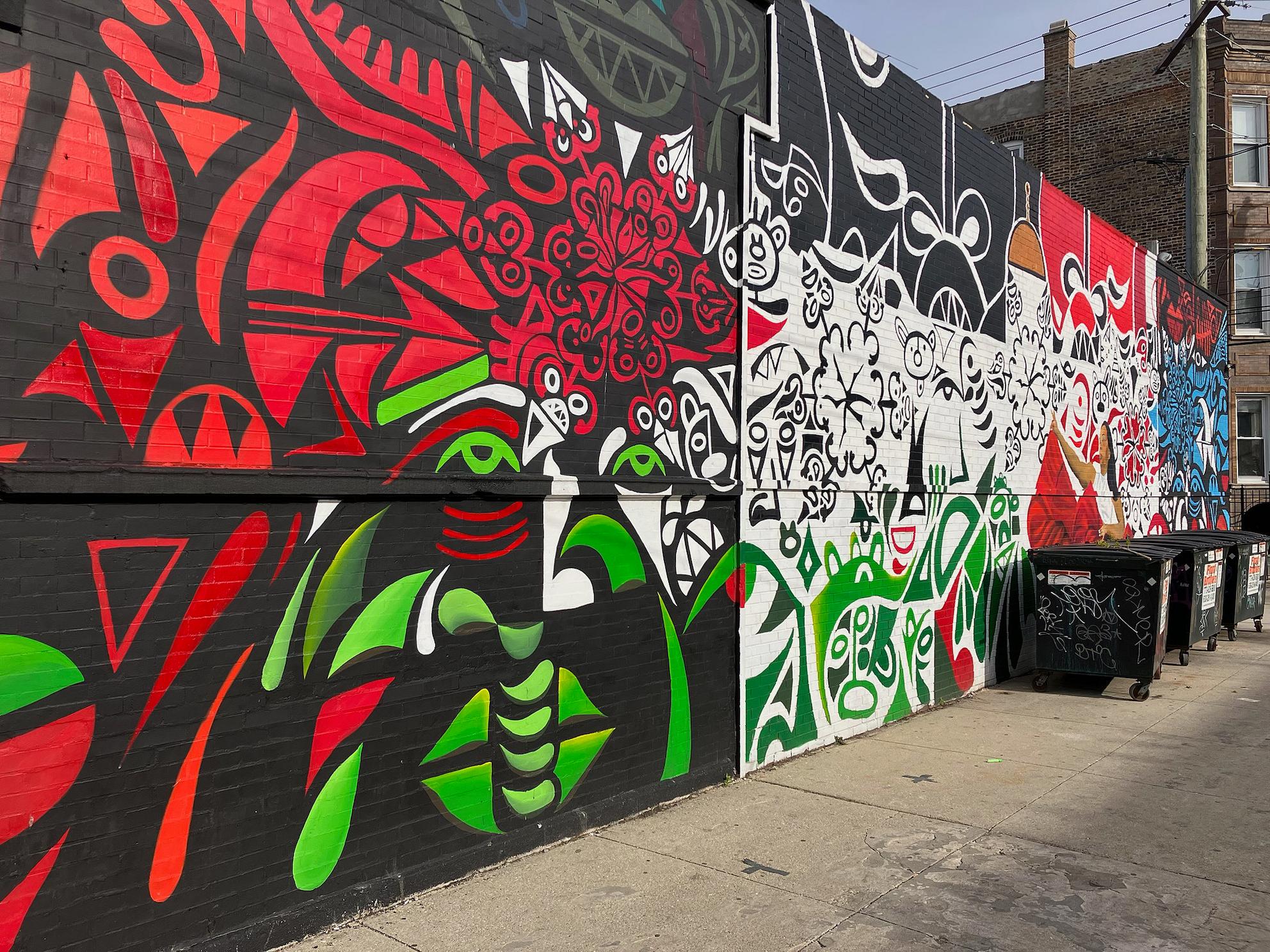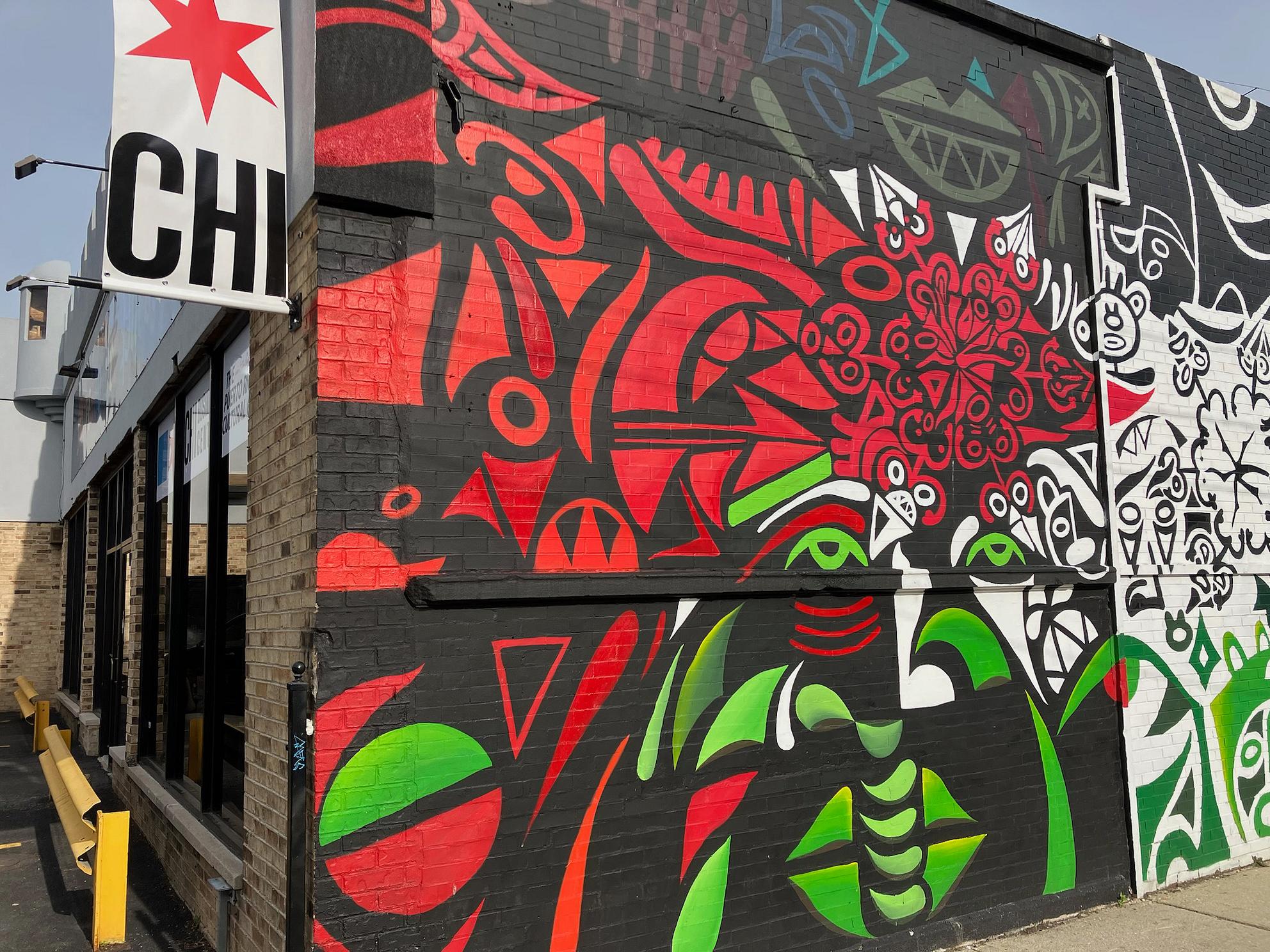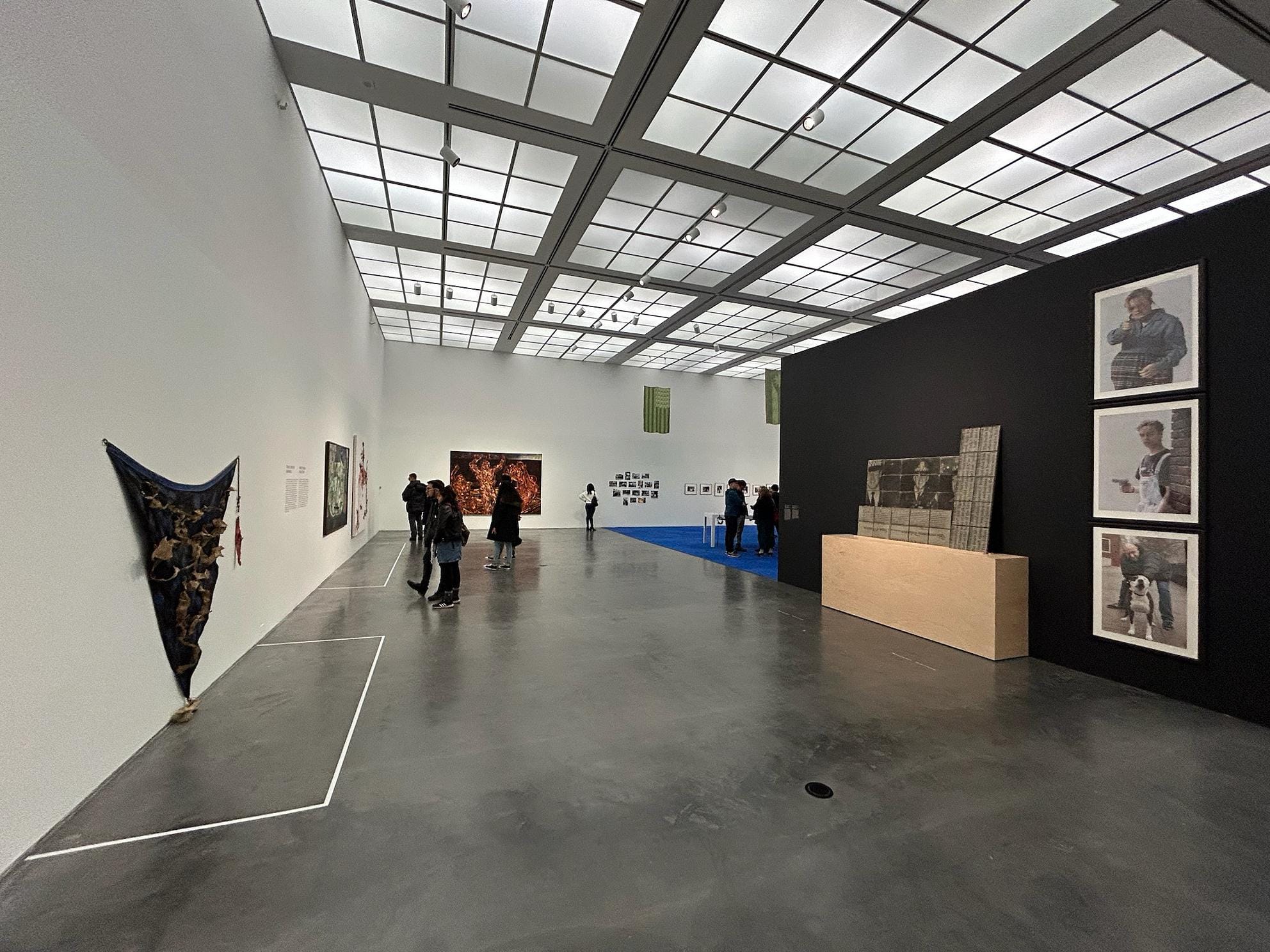Entre horizontes: Art and Activism between Chicago and Puerto Rico
Museum of Contemporary Art
Chicago
Through May 5
Entre horizontes: Art and Activism between Chicago and Puerto Rico at the Museum of Contemporary Art in Chicago (MCA) features artists with connections, in subject or origin, to both the city and the island in the title and grapples with the diasporic experience and colonial nature of Puerto Rico’s relationship with the US.
A pastel pink bus stop installation is the first work that exhibition-goers encounter. Artist Edra Soto incorporates the traditional architectural element of rejas — wrought iron screens typical of postwar Puerto Rican architecture — into the sculpture, entitled La distancia.
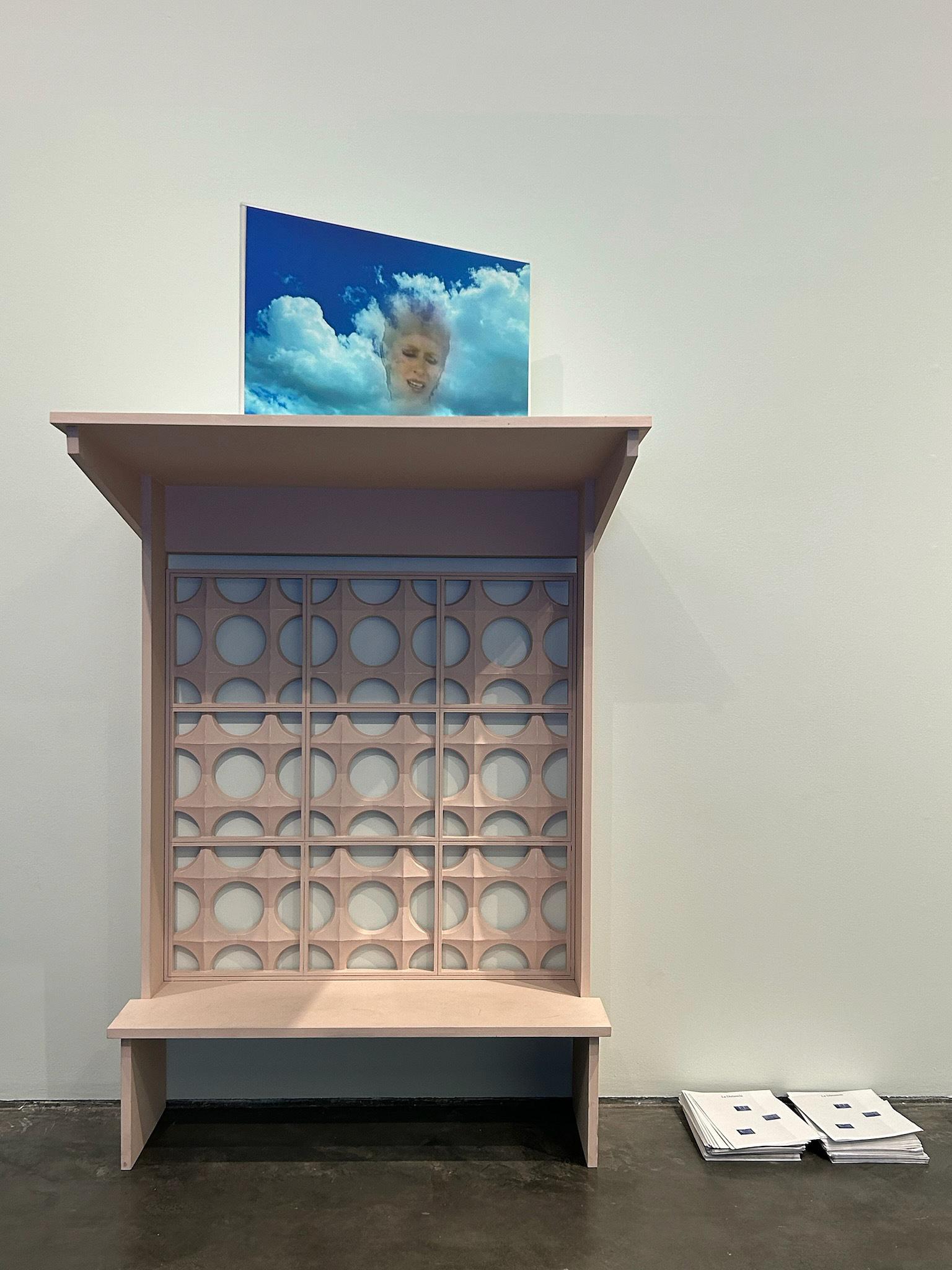
The piece invites contemplation of arrival and departure, distance and travel, itinerary and itinerancy. You’re on someone else’s time now. Fittingly, the exhibit is a straight shot by bus from Chicago’s Humboldt Park neighborhood, one of the largest Boricua enclaves in the US and the site of much of the political activity referenced in the exhibit (see below). The bus stop thus works as both the end of a municipal journey and the beginning of an artistic one.
Humboldt Park was the site of an oft-overlooked chapter in Chicago’s history of radical activism. In 1977, after one of the city’s earliest Puerto Rican Day parades, a riot broke out between neighborhood denizens and the Chicago police.
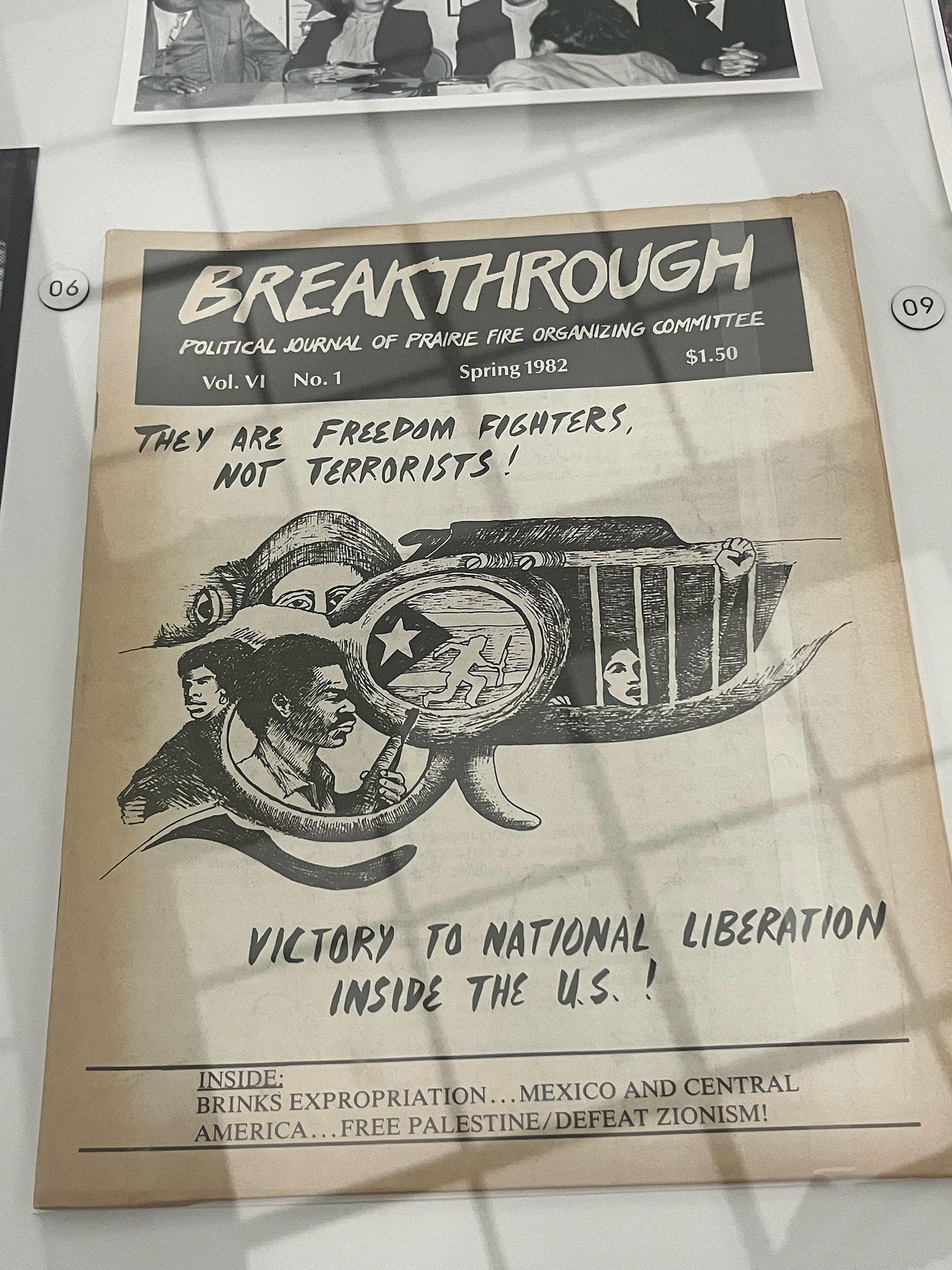
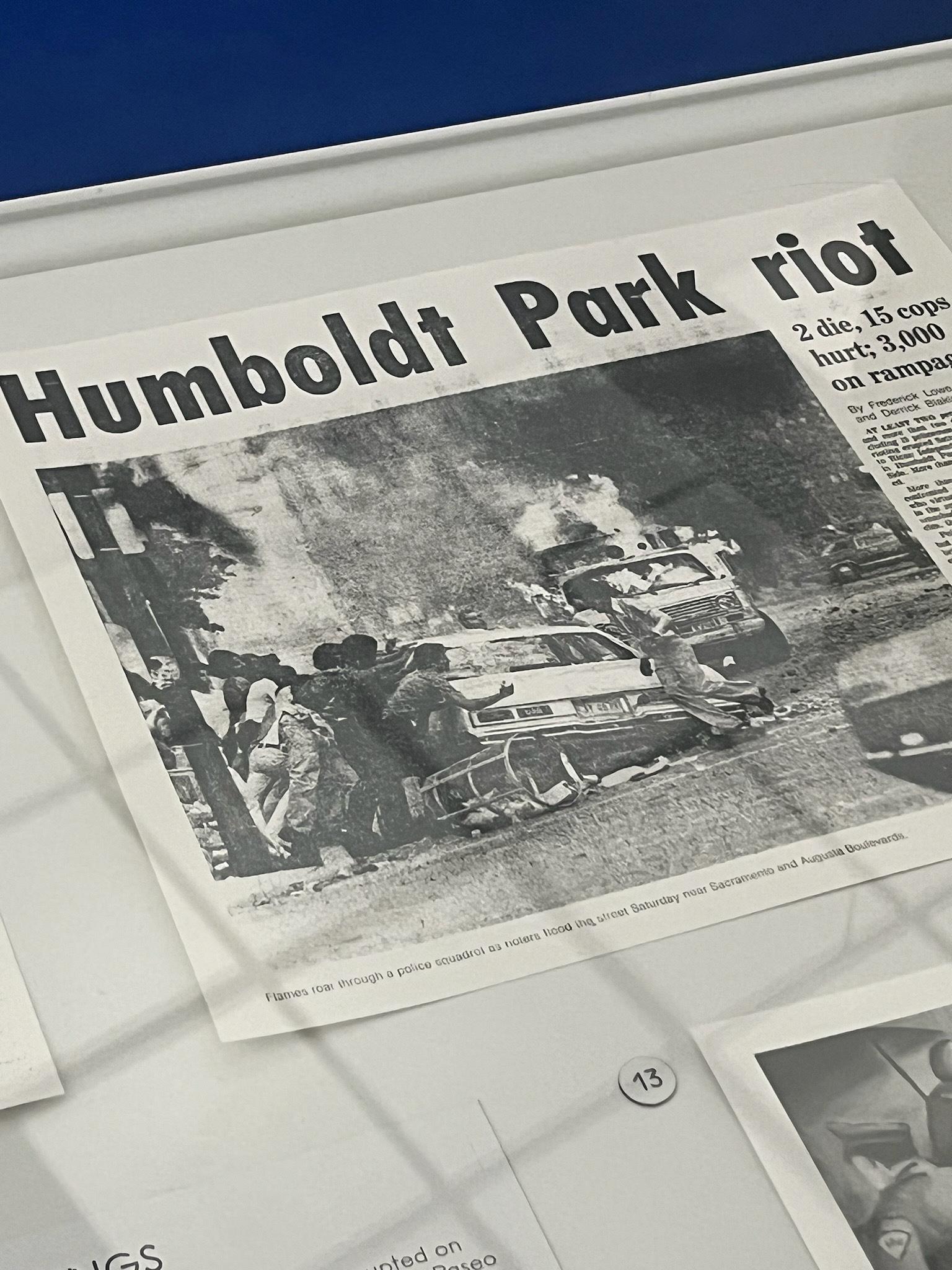
Moreover, in the 1970s, clandestine organizations like FALN (Fuerzas Armadas de la Liberación Nacional) organized across Chicagoland working to build armed resistance to “Yanki Colonialism,” with the ultimate aim of complete Puerto Rican independence from the United States and a dissolution of US military bases on the archipelago. FALN claimed responsibility for 120 bombings across the mainland United States and Puerto Rico that killed six people. In 1980, 11 FALN members were arrested in Evanston, Ill., a north Chicago suburb, in connection with the bombings. All of them were convicted for seditious conspiracy and received lengthy prison sentences. In 1999, however, the Clinton administration offered clemency to 16 FALN members due to the length of their sentences.
The MCA show reflects this history. All variety of artistic media populate the ample exhibition space, arranged in a wide horseshoe around two centralized viewing rooms featuring video works by San Juan-born artist Beatriz Santiago Muñoz: Casa de Seguridad Lado A/ Lado B (Safehouse Side A/ Side B). The companion works reimagine the actions undertaken in safehouses in the Chicago area. Little survives in the manner of firsthand accounts from the era of Boricua radicalism and the FALN. In Muñoz’s vignettes, actors imitate the work of building revolution while in hiding, pitting the demands of the private work of educating oneself and the public work of sharing that knowledge, educating others. Revolution is necessarily communal, yet revolutionaries must be surreptitious to succeed. This intimate and visceral work keeps the camera tightly focused on the actors’ bodies as they do the physical and mental labor of revolt, creating a sense of claustrophobia bordering on a paranoia, reflected in the the lack of written records, or potential evidence.
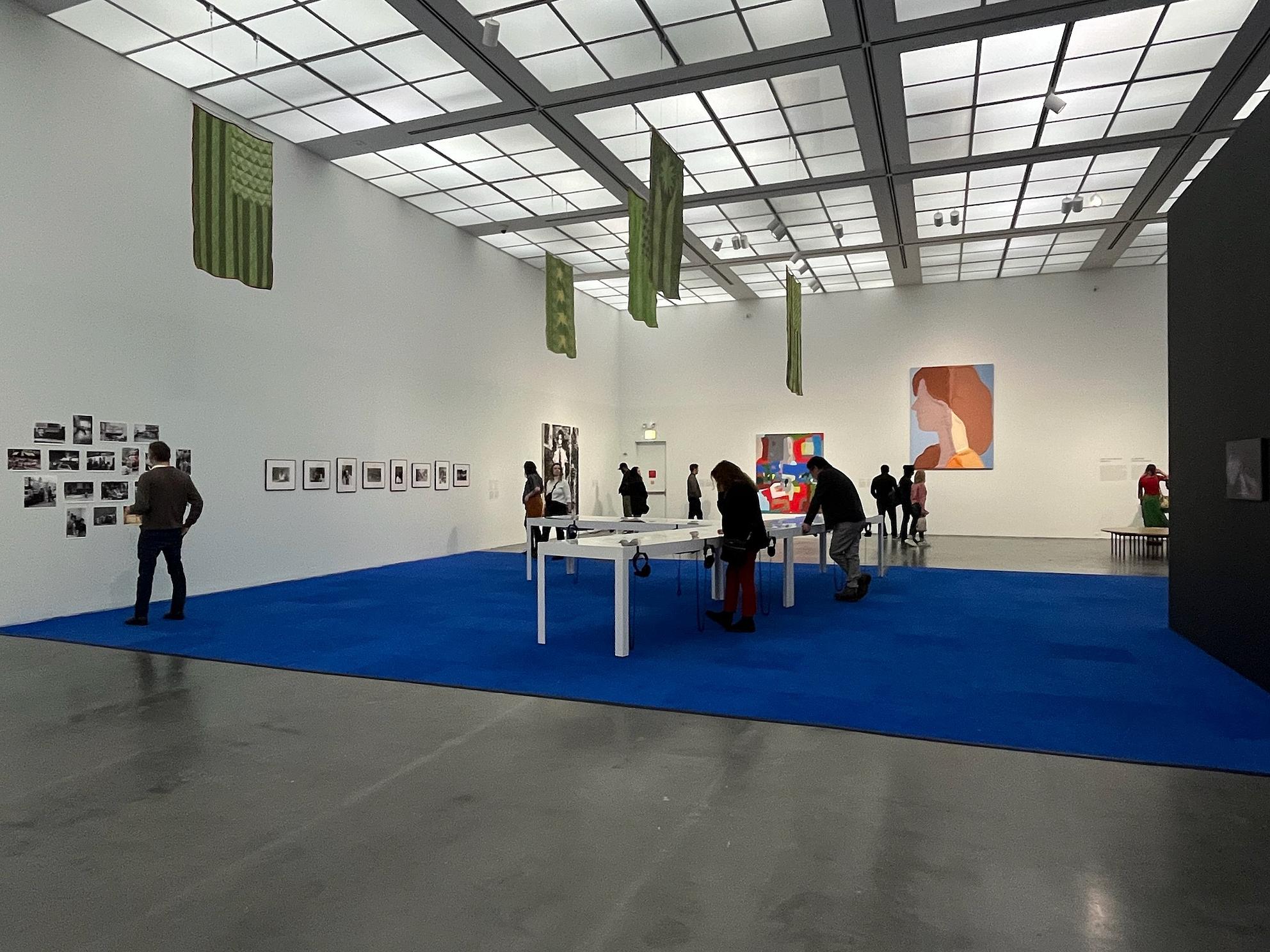
Much of the extant documents from the revolutionary work of the late ’70s, including newspapers, bits of correspondence, family photos and other ephemera related to the riots, sit on display in the broadest open section of the gallery, situated under the glass of a long, narrow display table with headphones to hear oral histories.
The work of the FALN is only one of the topics presented for contemplation. The work also takes on the massive destruction wrought by hurricanes, the omnipresent threat of police brutality, and the contradictions of catering to a tourism industry largely comprised of one’s colonial oppressors. To engage with this art is to engage with longing and freedom, seemingly just around the corner.
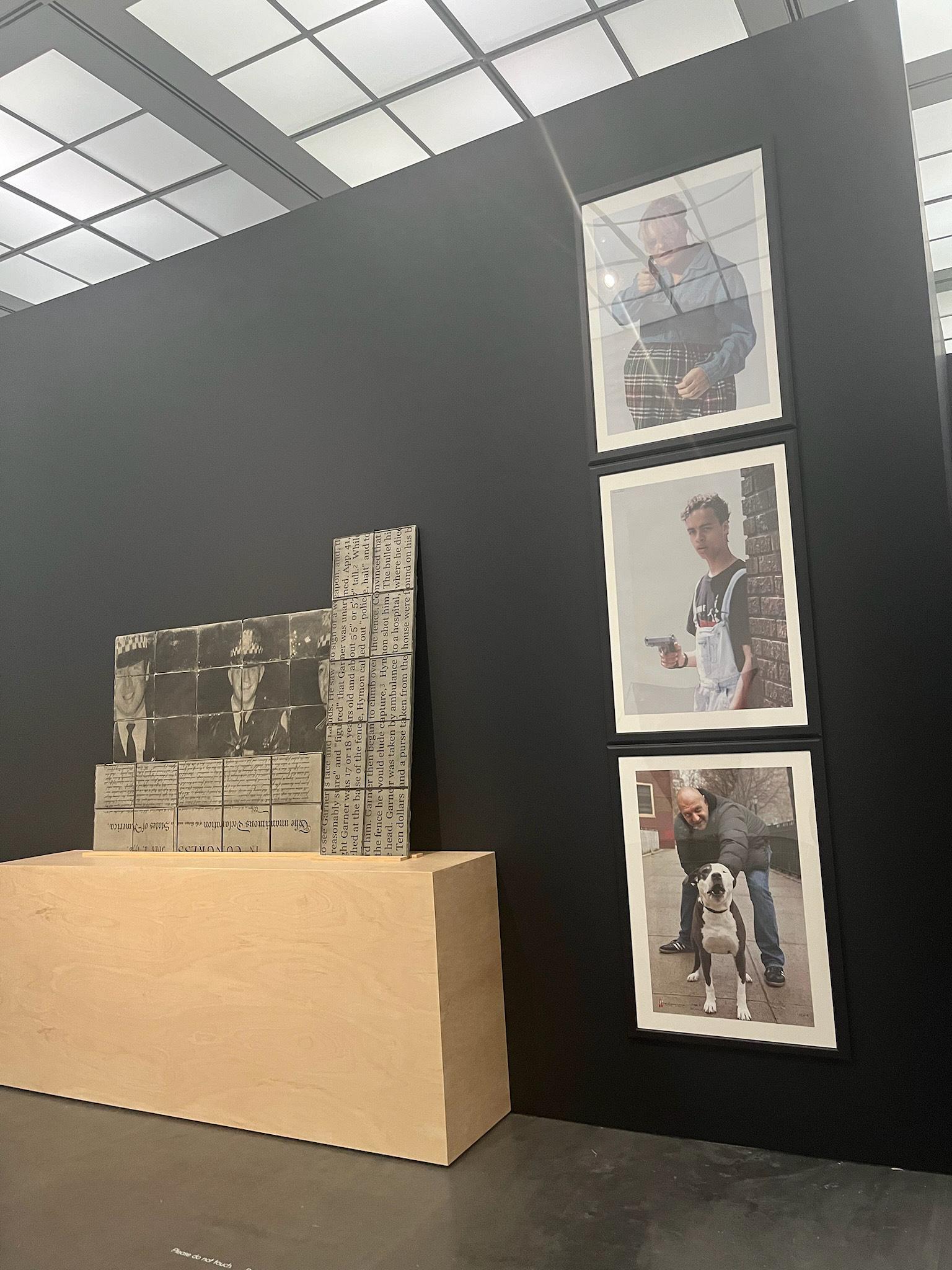
One particularly striking piece, to articulate fear set a cop free with love for Cady Noland by Ramón Miranda Beltrán, sits starkly on a wall, with three framed pictures of literal police targets: a pregnant woman holding a gun, a brown-skinned teen holding a gun, and a smiling man holding a pit bull. Next to them lie three concrete slabs: one, a transferred print of the Declaration of Independence; another, a portion of a picture of Chicago police officers smiling with the lifeless body of Black Panther Fred Hampton, who was killed in the city in 1969; the third, an excerpt from the 1985 Supreme Court case Tennessee v Garner, which established that police may use deadly force against a fleeing suspect.
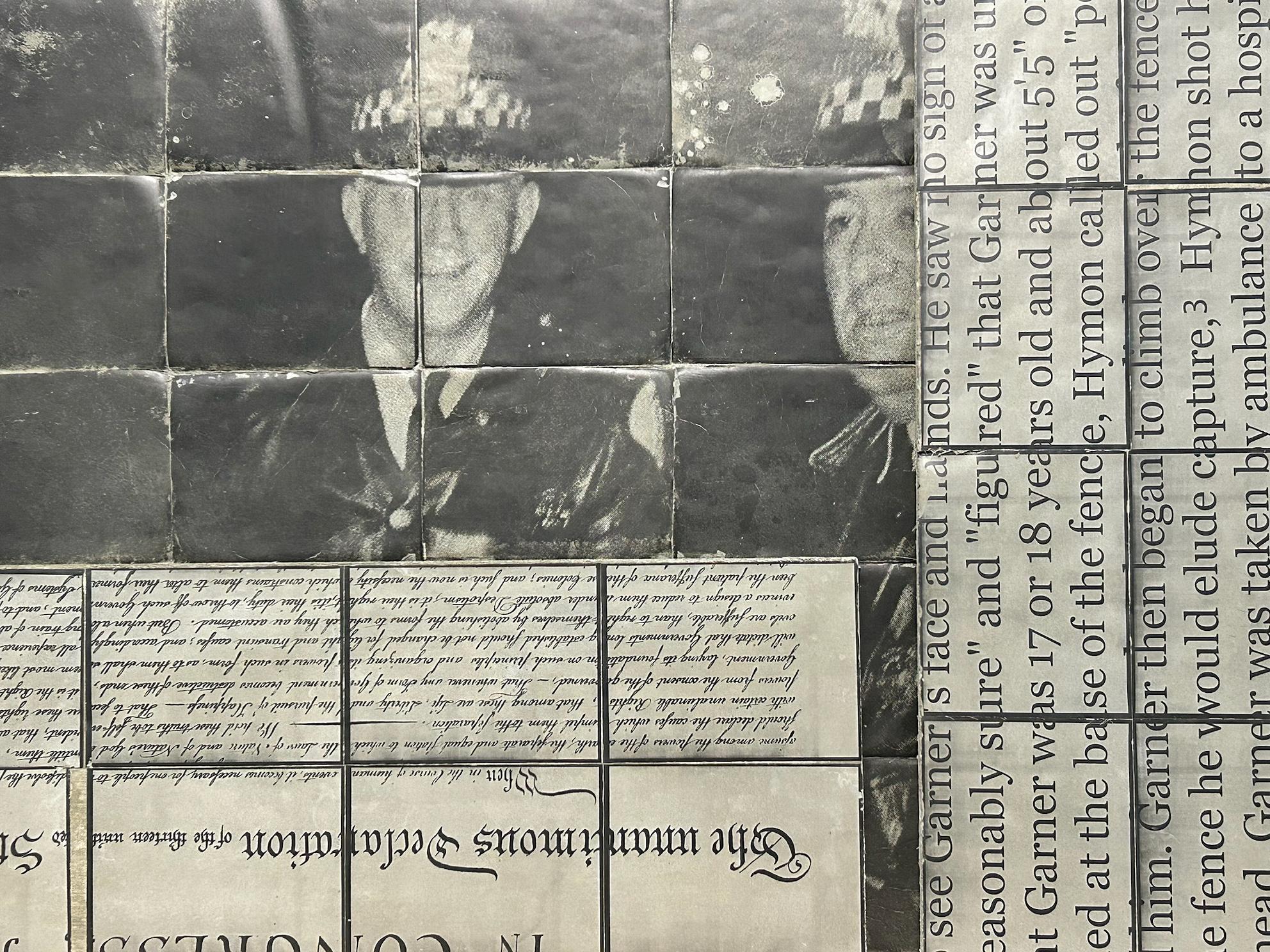
Taken holistically the piece is a gut punch, showcasing the grotesque approach to human life police training can entail. What is it to be a people used for target practice? What is it to feel the crushing weight of institutions?
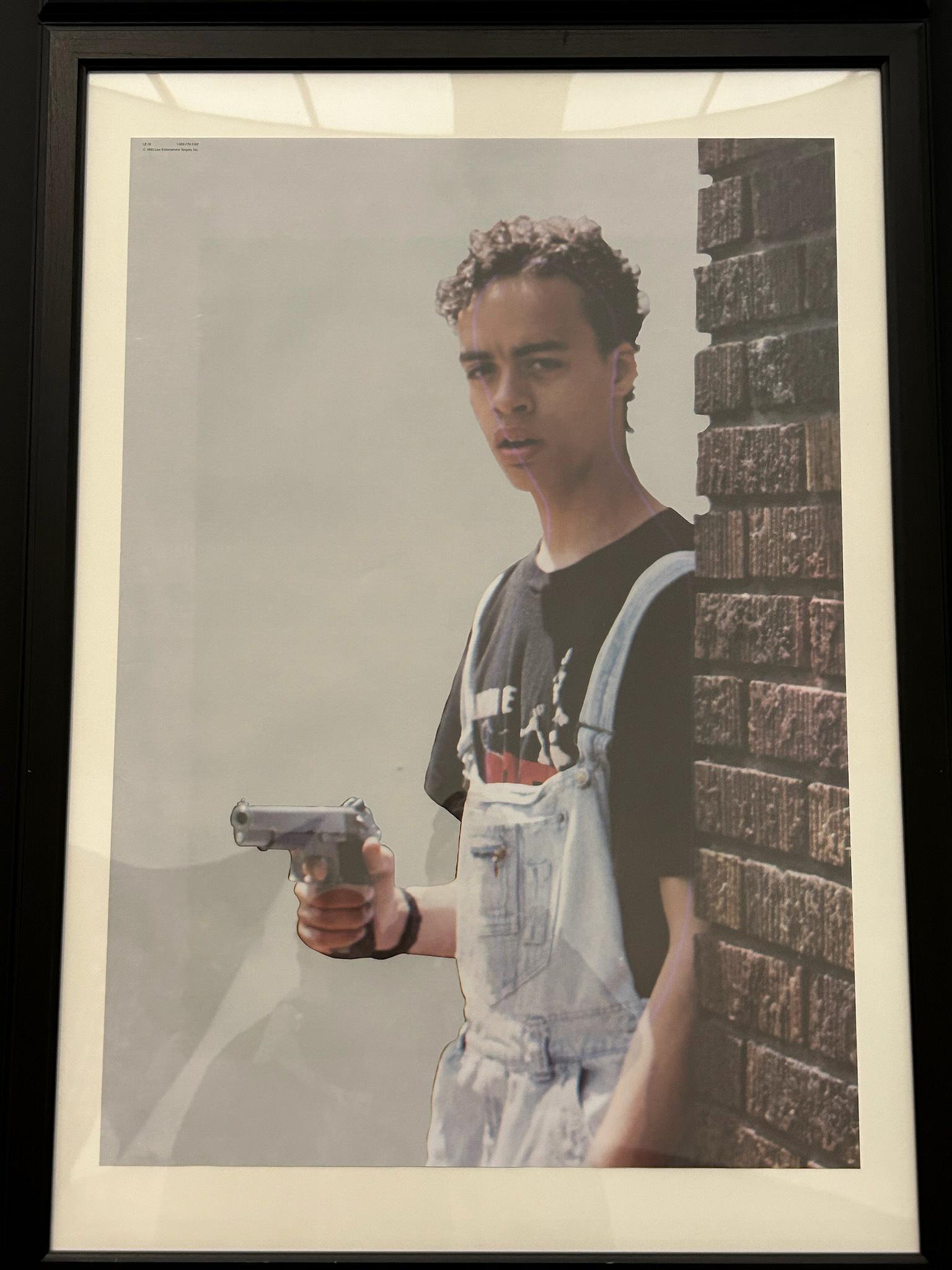
The exhibit also pays heavy homage to the printmaking traditions of Puerto Rico, from abstract paintings incorporating monotype technique to other works incorporating airbrush and repetition.
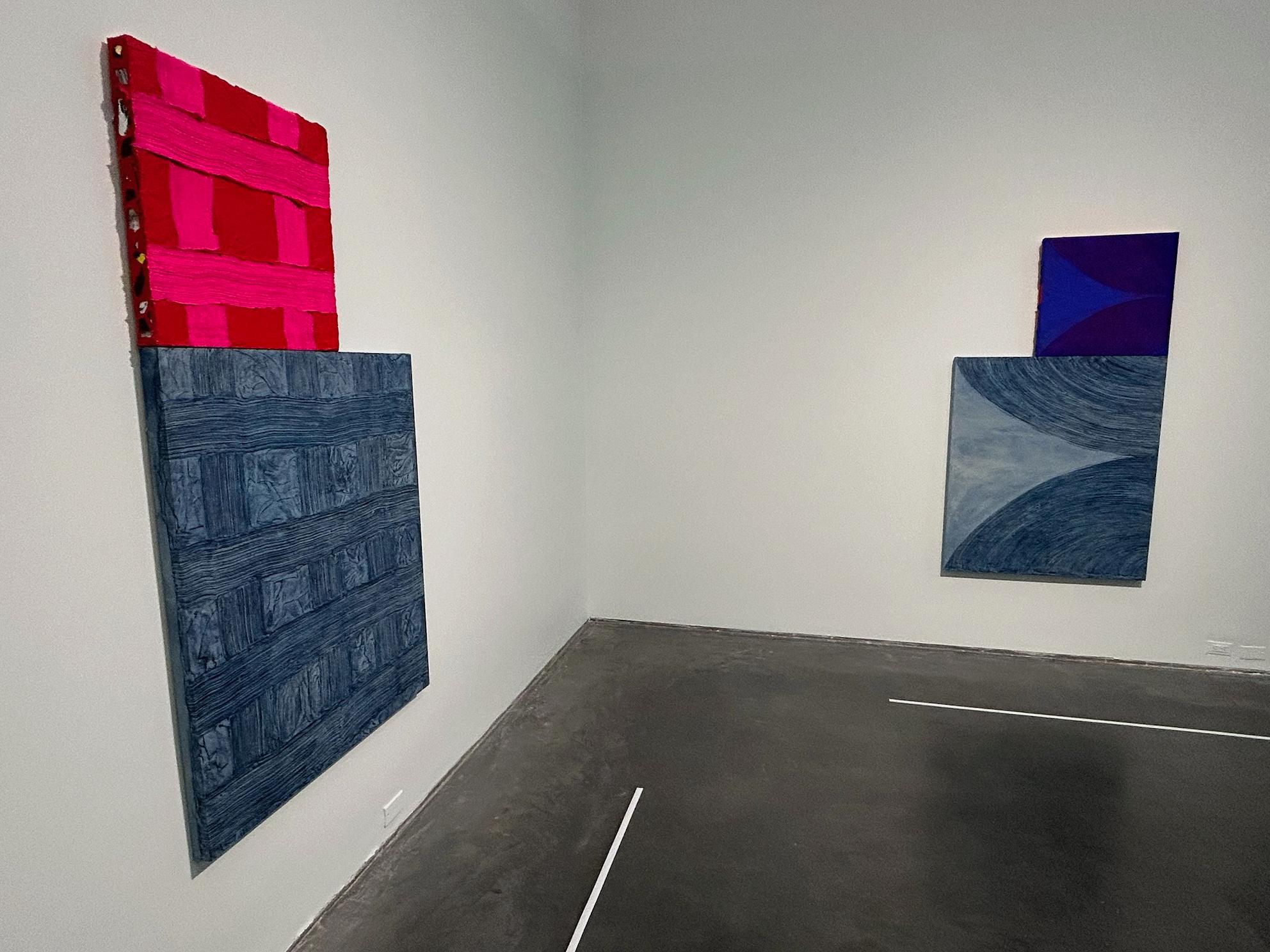
Another striking work burns forth from an opposite wall, featuring a fiery palette of shadowy figures heaped together on a rubber raft. The image is comprised of thickly applied brush strokes, against the black void of Lake Michigan and the twinkling Chicago skyline beyond that. In Aquí y allá, artist Arnaldo Roche Rabell makes a human print by applying a wet canvas to a model and vigorously rubbing until the contours emerge. The result is a visceral yet fluid scene that evokes deep struggle and a sense of unmooring in the context of broader Chicago.

The printmaking elements speak to a broader sense of transfer: how does one make community in a new place? What is lost in replication, and what is gained? How do we see the original differently? To make a print is to reproduce for the masses. Flyers are powerful tools in any liberation struggle. They can also be tools of the oppressor.
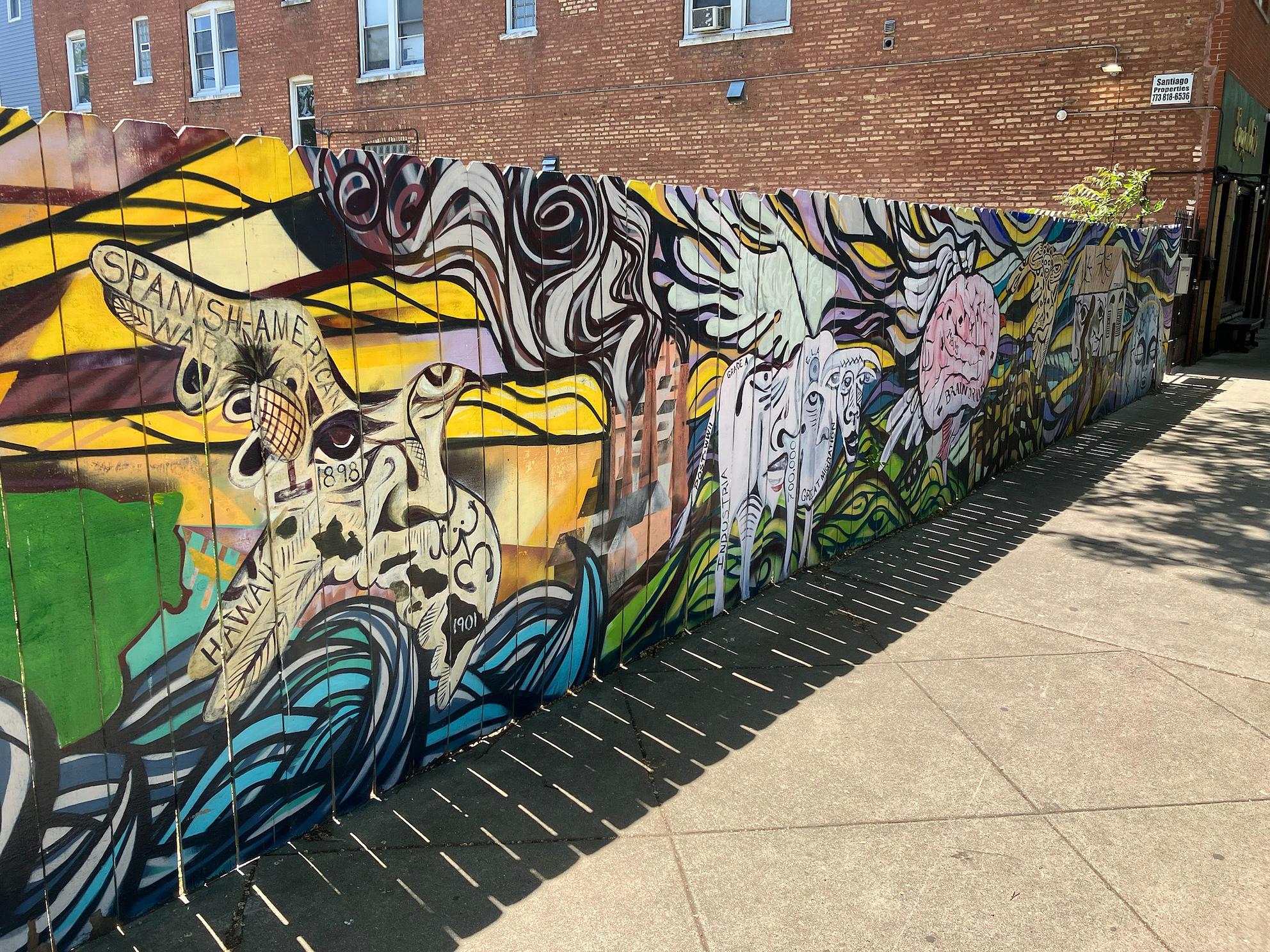
Today Humboldt Park can feels like a print of its former self. Last names are distinctly less Puerto Rican on mailboxes, and the proud Paseo Boricua has some shuttered businesses. Yet walking around, one sees the rejas and the murals depicting breaking the chains of liberation, and the Puerto Rican Cultural Center offers robust programming year round. Parade Day is a sight to behold, and every car bumping Bad Bunny in the wee hours of the morning has a right to the space: a Boricua home away from an island, a past, a national dream.
Entre horizontes runs through May 5, 2024 at the Museum of Contemporary Art.

